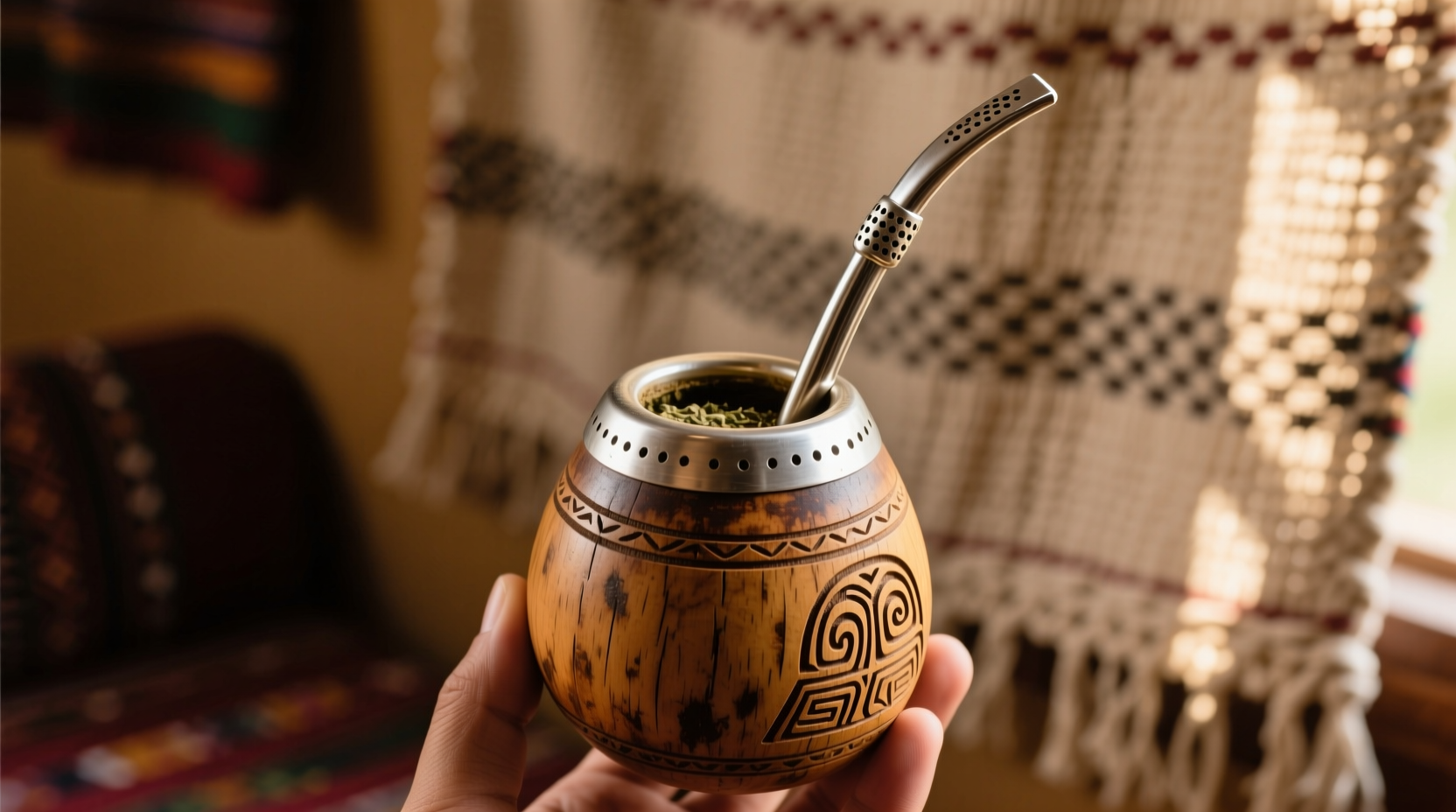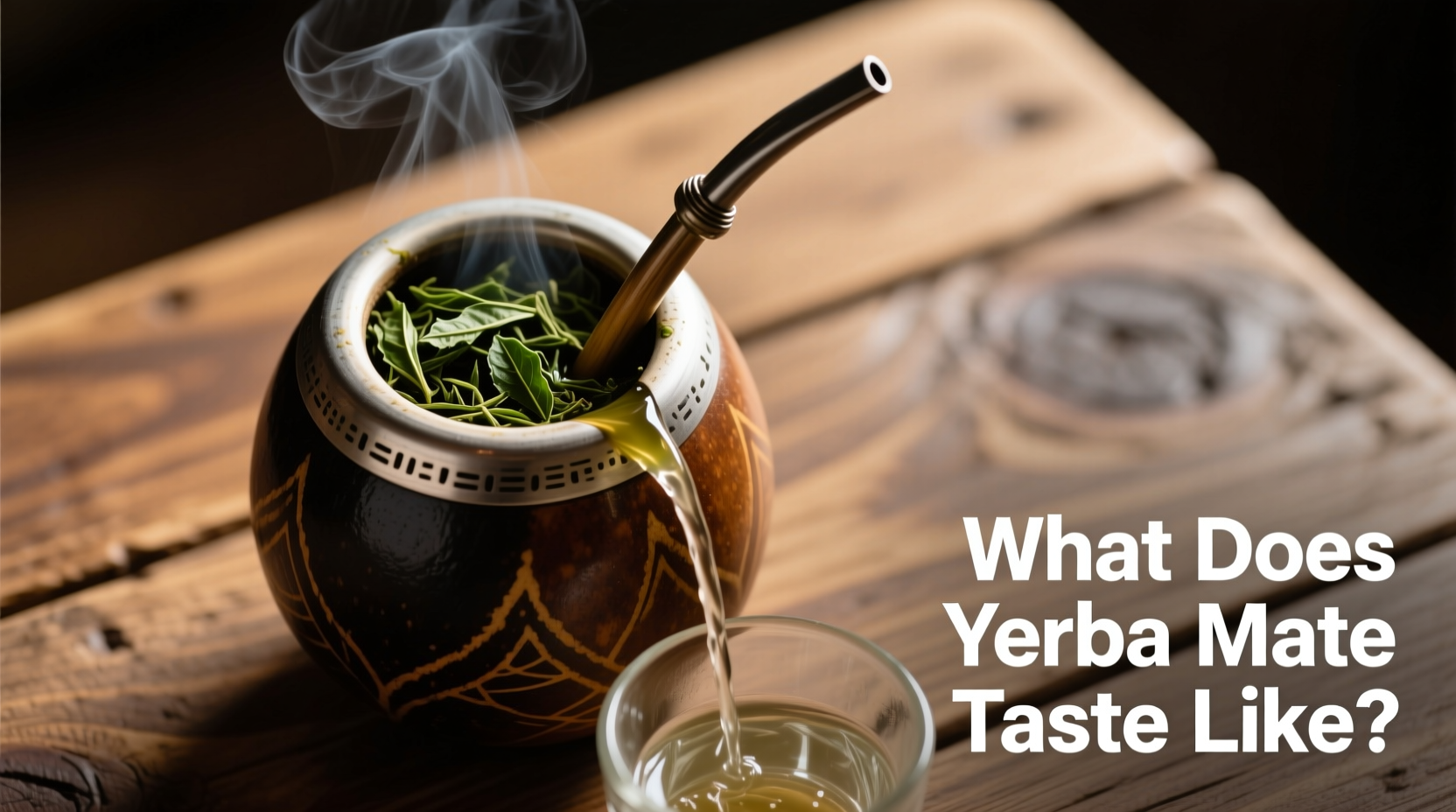Curious about yerba mate's distinctive flavor before trying it? Understanding what does yerba mate taste like helps you prepare for its unique sensory experience. This South American tradition delivers complex flavors that vary based on preparation method, brand, and regional preferences. Whether you're a tea enthusiast or coffee lover seeking alternatives, knowing the precise flavor profile helps determine if yerba mate suits your palate.
The Core Flavor Profile of Yerba Mate
Yerba mate's signature taste emerges from the dried leaves of the Ilex paraguariensis plant, native to South America's subtropical regions. The primary flavor notes include:
- Earthy and grassy - reminiscent of fresh-cut grass or forest floor
- Woody undertones - similar to aged green tea or bamboo
- Subtle bitterness - more pronounced than green tea but less than coffee
- Natural umami - a savory quality uncommon in most beverages
- Occasional smokiness - particularly in traditionally fire-dried varieties
Unlike coffee's roasted intensity or green tea's delicate notes, yerba mate delivers a robust yet balanced profile. The bitterness typically appears in the finish rather than upfront, creating a clean aftertaste that many describe as refreshing. This distinctive combination explains why what does yerba mate taste like remains a frequently searched question among beverage explorers.

Factors That Influence Yerba Mate Flavor
Several elements affect yerba mate's taste experience. Understanding these helps answer what does yerba mate taste like in different contexts:
| Factor | Effect on Flavor | Recommended Approach |
|---|---|---|
| Water temperature | Boiling water (212°F/100°C) increases bitterness; cooler water (160-180°F/70-82°C) yields smoother taste | Use water just below boiling for traditional preparation |
| Brewing time | Longer steeping intensifies bitterness and astringency | 3-5 minutes for optimal balance |
| Leaf cut size | Finer cuts release flavors faster but can become bitter | Medium-cut leaves provide most balanced extraction |
| Added ingredients | Mint, citrus, or honey modify the base flavor profile | Pure preparation first, then experiment |
How Yerba Mate Compares to Other Beverages
When exploring what does yerba mate taste like, comparisons help set expectations:
- Green tea: Both share grassy notes, but yerba mate has more body and earthiness. Japanese matcha tends to be sweeter, while yerba mate offers more pronounced vegetal qualities.
- Coffee: Yerba mate contains similar caffeine levels but lacks coffee's roasted, acidic profile. The bitterness differs significantly - coffee's comes from roasting, while yerba mate's is inherent to the leaf.
- Black tea: Yerba mate has less astringency than strong black teas but more complexity than mild varieties like white tea.
- Herbal teas: Unlike most herbal infusions, yerba mate contains caffeine and delivers a more substantial mouthfeel.
Anthropological studies of South American drinking traditions reveal that indigenous communities historically valued yerba mate's balanced bitterness as a desirable quality, not something to mask. Modern palates accustomed to sweetened beverages often find the initial bitterness surprising, but most develop appreciation after several servings.
Regional Variations in Flavor Experience
The answer to what does yerba mate taste like varies across South America:
- Argentina/Uruguay: Typically prepared strong with pronounced bitterness, often using traditional gourds
- Paraguay: Served cold as tereré with herbs, creating a refreshing, less bitter profile
- Southern Brazil: Often includes subtle additions like mint or lemon, softening the earthy notes
According to ethnobotanical research from the University of Buenos Aires, these regional differences stem from historical preparation methods developed before modern processing techniques. The traditional fire-drying method used in Argentina contributes smoky notes absent in air-dried Brazilian varieties.
Practical Tips for First-Time Drinkers
If you're wondering what does yerba mate taste like might mean for your personal experience, consider these tips:
- Start with a lower water temperature (160-170°F) to minimize bitterness
- Try a flavored variety first if you're sensitive to bitter notes
- Use the traditional bombilla straw to control leaf-to-water ratio
- Don't add sweeteners initially - experience the pure flavor profile
- Allow multiple servings to develop your palate for the distinctive notes
Many first-time drinkers report the flavor becomes more appealing after 3-5 servings as their palate adjusts. The initial grassy notes often give way to appreciation of the complex umami and earthy qualities that make yerba mate unique among caffeinated beverages.
Common Misconceptions About Yerba Mate Taste
Several myths persist about yerba mate's flavor profile:
- "It tastes exactly like green tea" - While both are vegetal, yerba mate has distinctive earthy notes and more body
- "All yerba mate is extremely bitter" - Proper preparation yields balanced flavor with only subtle bitterness
- "Flavored varieties are 'inauthentic'" - Regional traditions include numerous flavor variations
- "The taste doesn't change with preparation" - Water temperature and steeping time dramatically affect flavor
Understanding these distinctions helps clarify what yerba mate actually tastes like versus common assumptions. The beverage's versatility across preparation methods makes it adaptable to various palates while maintaining its distinctive character.











 浙公网安备
33010002000092号
浙公网安备
33010002000092号 浙B2-20120091-4
浙B2-20120091-4